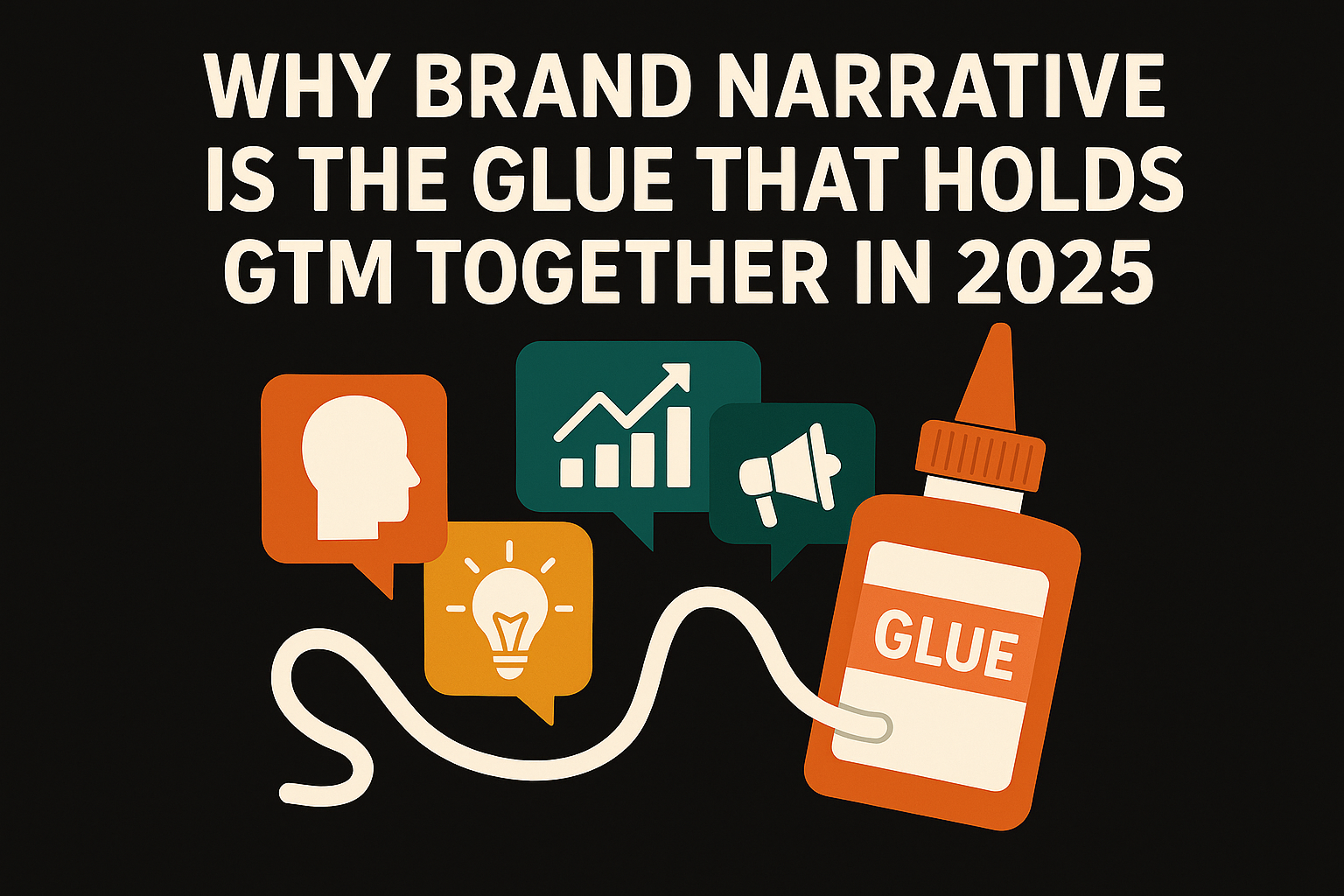In today’s crowded B2B marketplace, standing out is harder and more important than ever. With competitors multiplying and customer attention spans shrinking, brands can’t afford to blend into the background. The brands that win are those that carve out a distinct position and communicate it with clarity and consistency.
That’s where brand narrative comes in. More than just a tagline or a mission statement, brand narrative is the connective tissue that ties together every aspect of your go-to-market (GTM) strategy. It’s the story that defines who you are, why you exist and why your audience should care. When brand positioning and narrative are tightly woven through every touchpoint, they transform fragmented tactics into a cohesive, memorable experience that actually moves the needle.
What Is Brand Narrative – And Why Does It Matter?
Brand narrative is more than a mission statement or a set of visual assets. It’s the story that answers four fundamental questions:
- Why does this business exist?
- How does it solve customer pain
- Why should the customer care?
- How is it different?
According to the LinkedIn B2B Institute, brands with a consistent and authentic story experience up to 28% higher customer retention and 18% faster sales cycles. The FutureBrand Index 2024 further highlights that narrative-driven brands outperform on trust, loyalty and market differentiation.
The Cost of a Weak Narrative
When the brand narrative is unclear or missing, GTM efforts quickly become fragmented:
- Content feels generic and fails to differentiate.
- Messaging drifts across channels and touchpoints.
- Sales and marketing teams tell different stories, leading to misalignment.
- Customer engagement and conversion rates suffer.
Other sources report that inconsistent messaging can reduce conversion rates by over 20% and create internal friction that slows down growth initiatives.
2025 Trends: The Evolution of Brand Storytelling
Several trends are shaping how B2B brands approach narrative:
- Hyper-Personalisation: AI-driven insights enable brands to tailor stories to specific segments and even individuals.
- Community Focus: Micro-communities demand narratives that resonate deeply with their unique values and challenges.
- Purpose and Impact: Buyers increasingly expect brands to stand for something beyond profit – sustainability and social responsibility are now central to the narrative.
- Human-Centric Storytelling: Real stories from real people – customers, employees, partners – outperform generic marketing copy.
How to Build a Narrative-First GTM Strategy
- Define the Core Story
- Articulate a clear, specific “why” that goes beyond generic claims.
- Outline how your solution or service solve their pain in the present
- Validate the narrative with customer feedback and frontline teams.
2. Integrate Across Every Touchpoint
- Ensure the narrative runs through all channels: website, outbound messaging, sales enablement, onboarding, and internal communications.
- Consistency is crucial – misalignment between teams signals a narrative gap.
3. Enable and Align Teams
- Provide training, playbooks, and workshops to ensure everyone can confidently share the brand story in their own words.
4. Keep the Narrative Dynamic
- Regularly update the narrative based on market feedback, customer stories, and emerging trends.
5. Measure Narrative Impact
- Track not only brand awareness but also narrative consistency, message recall, and customer engagement throughout the funnel.
A strong brand narrative is not a ‘nice to have.’’ When the story is clear and consistent, GTM strategies become more effective, teams stay aligned and customers engage at a deeper level.
As the market continues to evolve, brands that lead with narrative will be the ones that win attention, loyalty and growth.



